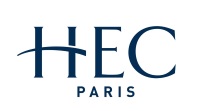No 1363: ESG Investing: How to Optimize Impact?
Augustin Landier () and Stefano Lovo ()
Additional contact information
Augustin Landier: HEC Paris
Stefano Lovo: HEC Paris
Abstract: Can a self-proclaimed Socially Responsible Fund (SRF) whose objective is to maximize assets under management improve social welfare? We study this question in a general equilibrium two-sector model incorporating financial intermediation, negative externalities due to firms’ emissions, and investors' social preferences, which are of two kinds: (a) private benefits from investing in low-emission footprint equities (``value alignment''), and (b) utility from causing improvement in social welfare (``impact''). We analyze the equilibrium size and strategies of the SRF. When investors with value-alignment preferences are in large proportion in the population we show that the SRF invests in the low-emission sector, while requiring invested companies to use low-emission suppliers. This ``Scope 3 strategy'' attracts both types of investors and indirectly induces lower emissions by acting on the supply-chain. In some other scenarios, the SRF adopts a dual-fund strategy that separates the two types of investors: One fund, focussed on the clean sector, caters to investors with value-alignment preferences, while another, which invests in the higher-emission sector, appeals to impact investors by imposing reduced direct emissions to invested companies.
Keywords: Sustainable Finance; Socially Responsible Investing; Impact Investing; Green Finance; ESG
JEL-codes: G11; G23; M14; O44; Q51
64 pages, January 30, 2020
Full text files
papers.cfm?abstract_id=3508938 HTML file Full text
Questions (including download problems) about the papers in this series should be directed to Antoine Haldemann ()
Report other problems with accessing this service to Sune Karlsson ().
RePEc:ebg:heccah:1363This page generated on 2025-06-10 11:14:56.

